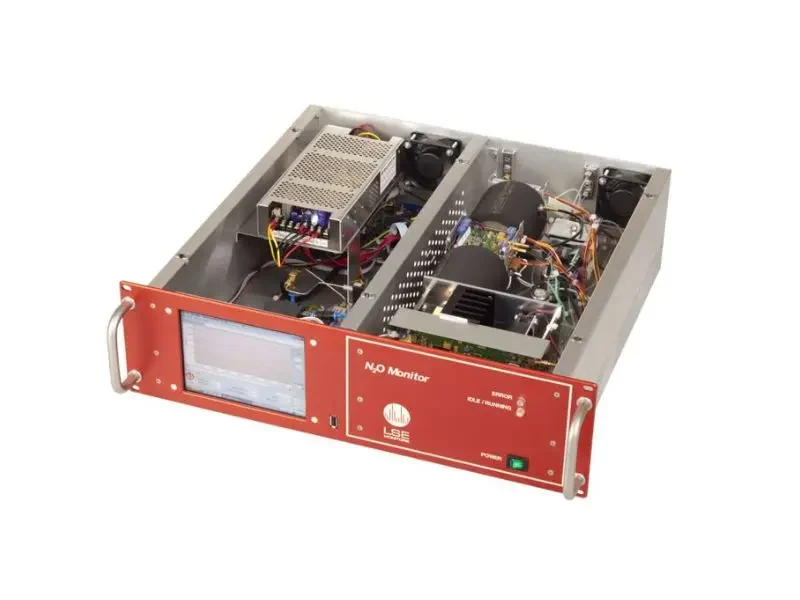How it works
The LSEN2O – 4405 Nitrous Oxide Air Monitor is a robust and cost-effective analyser which uses photoacoustic principles with a quantum cascade laser. The concentration of nitrous oxide (N₂O) in ambient air can be continuously determined with a sensitivity of 0.005 ppm and a time resolution of 120s.
The LSEN2O 4405 monitor is a highly sensitive laser-based photoacoustic detector, able to continuously monitor the concentration of N₂O with a detection limit below one ppbv within several minutes. The detector is specifically designed to work stand-alone with virtually no maintenance. It is robust and has user-friendly software. The monitor is designed to keep the cost of ownership as low as possible.
The operational principle of the LSEN2O 4405 involves directing infrared light produced by a quantum cascade laser through a measurement cell which is continuously flushed with sample gas. An integrated pump draws ambient air through the system and absorption of laser light by N2O present in the sample gas induces pressure changes within the cell, detected through modulation of laser light intensity at an acoustic frequency of 1600Hz. This resulting pressure modulation is captured by small microphones, with amplitude directly proportional to N₂O concentration.
Nitrous oxide (N₂O) is a potent man-made greenhouse gas and contributor to ozone depletion, primarily originating from agricultural emissions, followed by industry and energy plants. Nitrous oxide is naturally emitted from soils and oceans and human activities such as soil cultivation, nitrogen fertiliser usage, nylon production and combustion of organic matter significantly contributes to emissions. Effective reduction of N₂O emissions necessitates diligent monitoring to assess the efficacy of mitigation strategies.
Despite N₂O’s relatively stable atmospheric concentration (330 ppbv) with minimal diurnal and seasonal variations, precise monitoring demands highly sensitive and stable instrumentation.
Servicing
Contact us for servicing information.
Datasheets
LSEN2O – 4405 Nitrous Oxide Air Monitor
LSEN2O – 4410 Nitrous Oxide Air Monitor
Technical specifications
- Noise (1σ, 120 s) – 0.005ppm:
- Range – 0-15ppm, tunable to higher concentrations:
- Precision: A maximum precision of 0.005 ppm or 2% of measured value
- Time resolution: 120 s
- Response time (T10-90%): < 2 min
- Linearity: R2 > 0.999
- Sample flow rate: 80 ml/min






